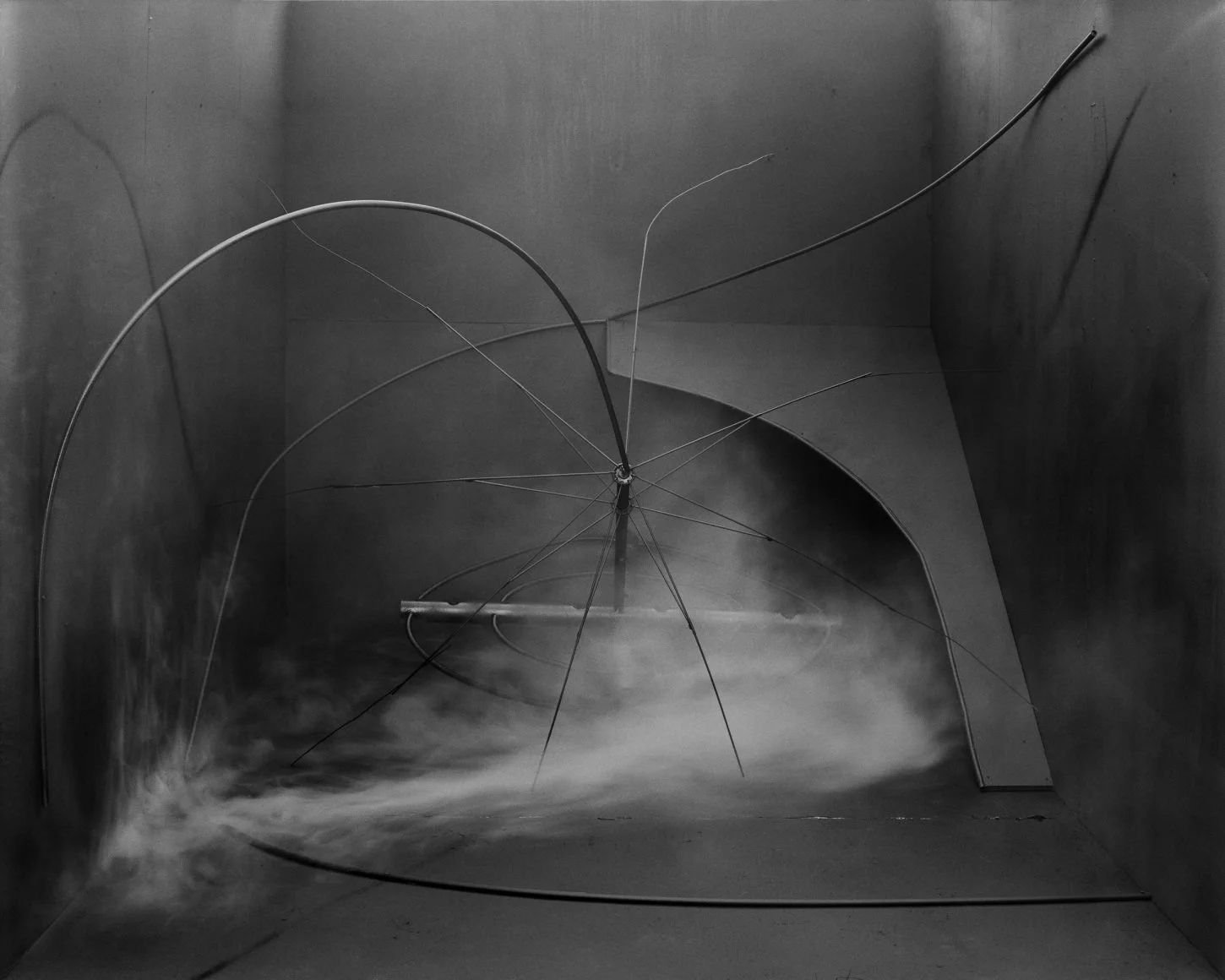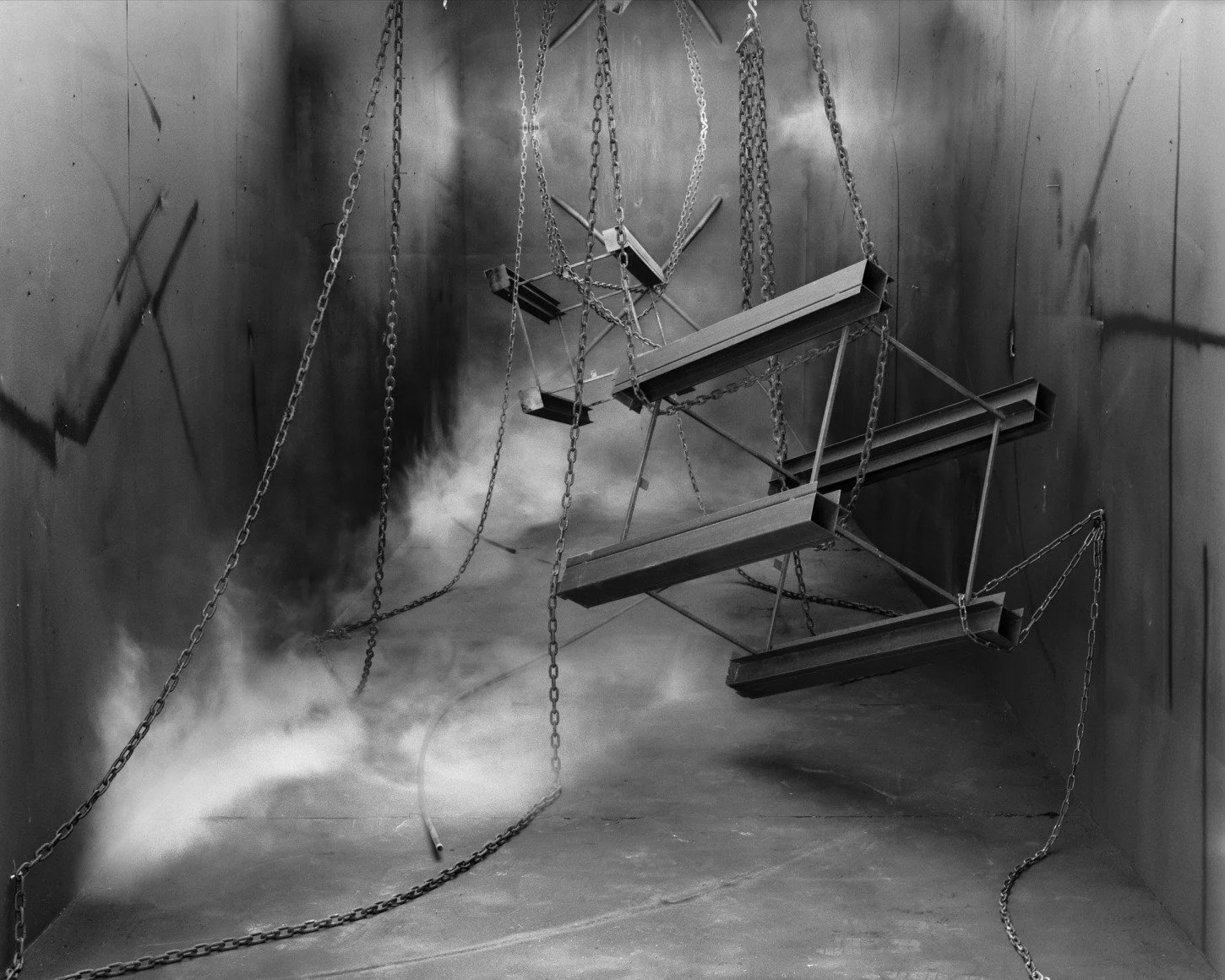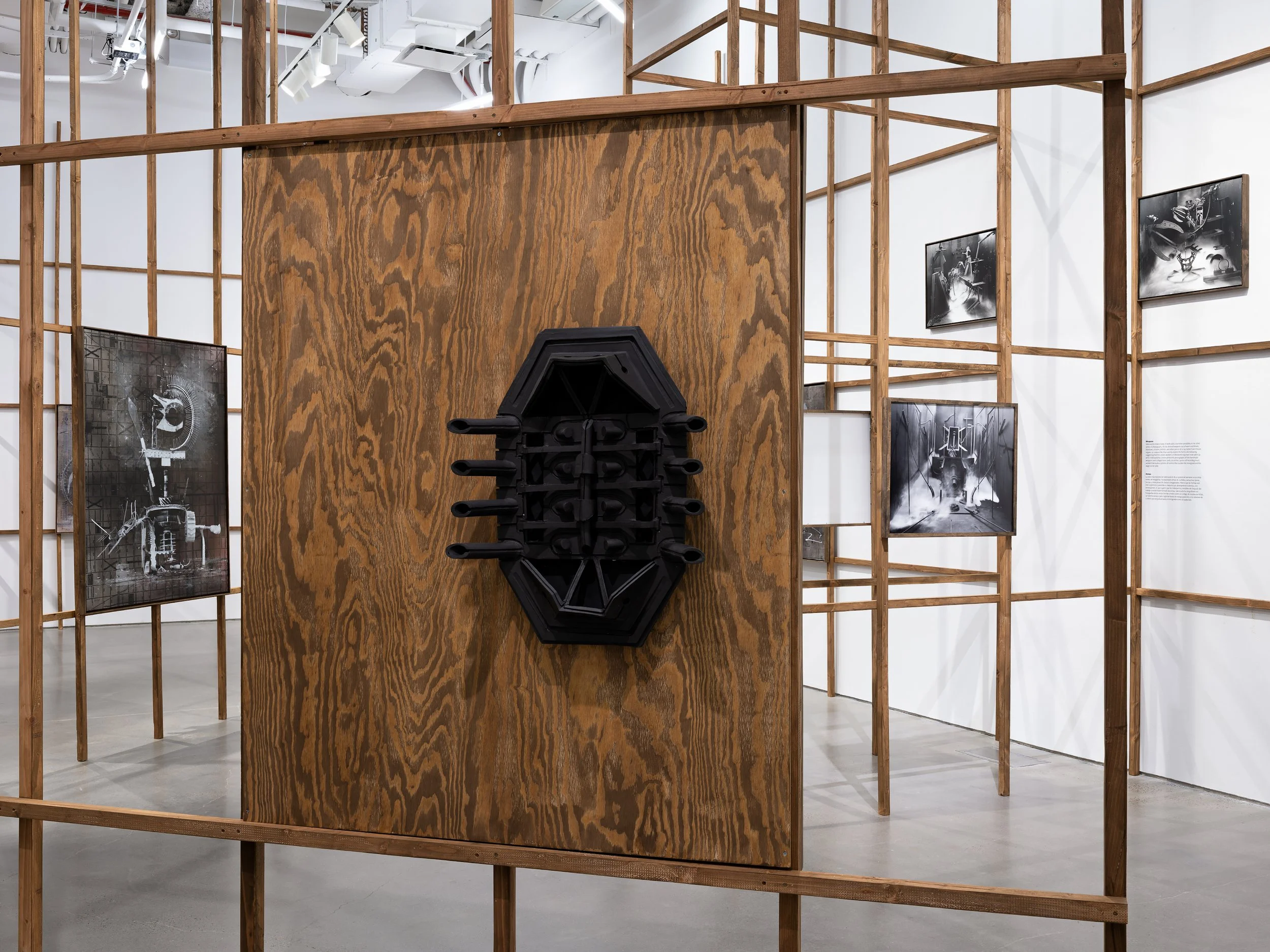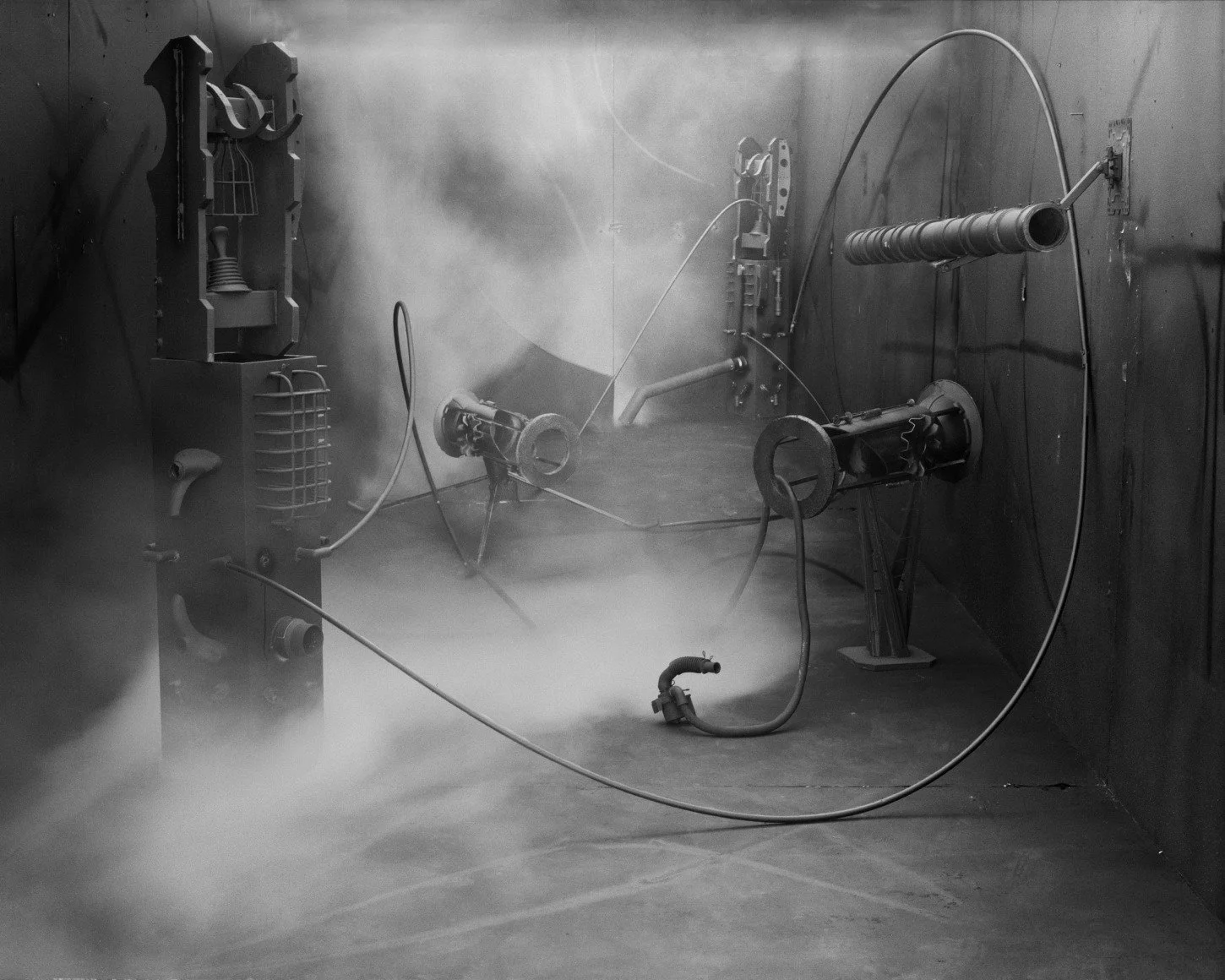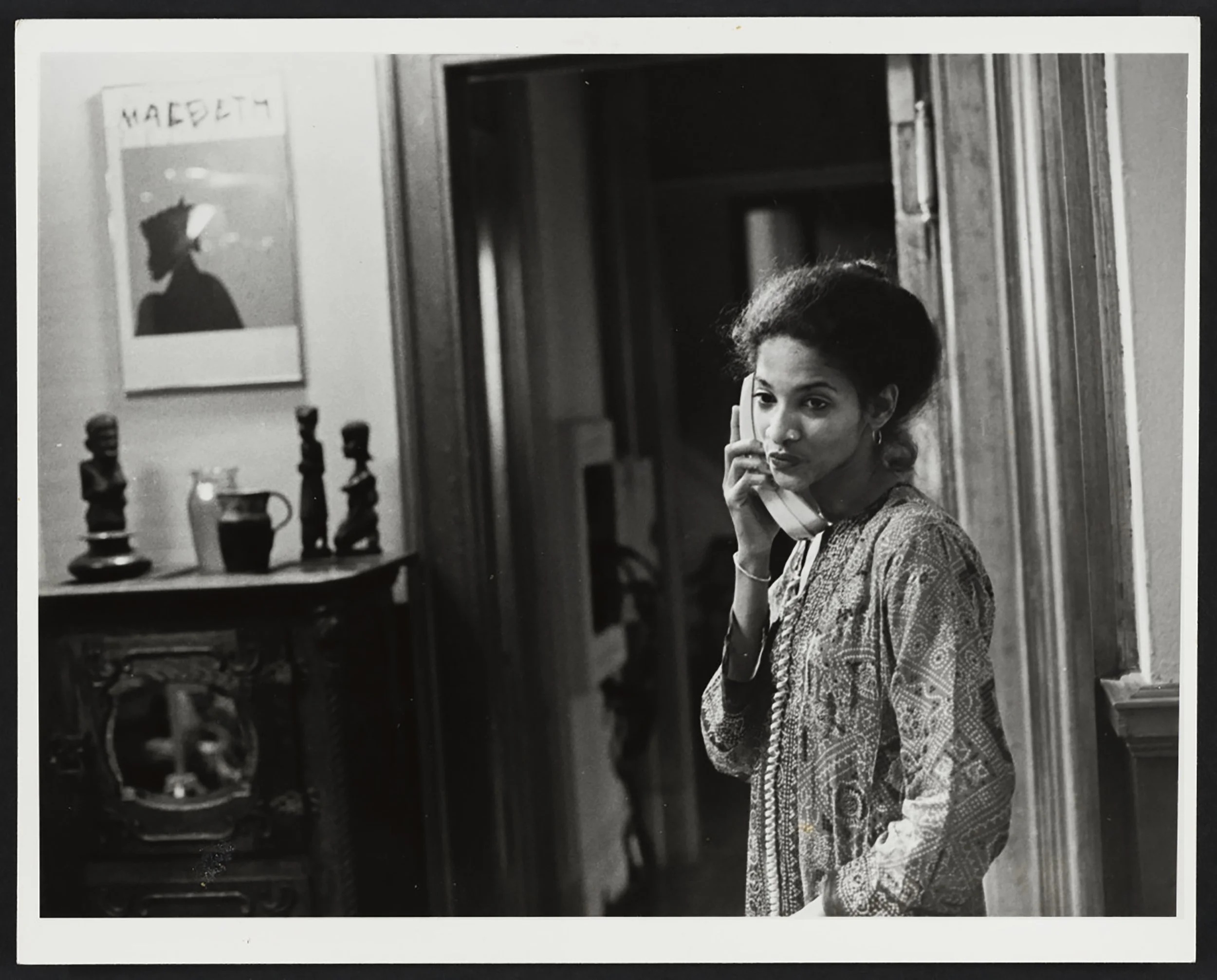Exhibition Review: Rodrigo Valenzuela
Rodrigo Valenzuela
Afterwork #4, 2021
Silver Gelatin Print
32h x 40w in
81.28h x 101.60w cm
Edition of 3 + 1AP
Courtesy of Asya Geisberg Gallery
Written by Max Mckeon
Copyedited by Chloë Rain
The white walls of the Asya Geisberg Gallery have been covered in faded smoke and ash, soot has dried dripping down the enclosure, transforming the space into a memory of industrial work. On the walls for his second exhibition with the gallery, Rodrigo Valenzuela displays his photographic series “Afterwork” depicting abandoned industrial spaces meticulously constructed to evoke questions of the current state of labor in our world through the ruins of an industrialized society. These environments are ominous, dark, and pointed, delivering a visual message of how physically and emotionally demanding the cost of time associated with manufacturing these worlds are. Yet this time is discarded, disposed of when the machines become obsolete, left to dwell in the steam of wasted energy, these large mechanical objects remain as relics of a forgotten past and unresolved future. This exhibition will be on view from September 10 to October 22, 2022.
Installation View at Asya Geiberg Gallery
Photo Credit: Etienne Frossard
Courtesy of Asya Geisberg Gallery
Installation View at Asya Geiberg Gallery
Photo Credit: Etienne Frossard
Courtesy of Asya Geisberg Gallery
In addition to the Asya Geiberg gallery, the BRIC Gallery in Brooklyn, NY will be presenting Valenzuela’s concurrent exhibition “New Works for a Post Worker’s World” on view from September 22 to December 23, 2022.
Celebrating the official reopening of the BRIC House’s first Contemporary Art Exhibition in over 2 years, the main gallery is headlined by Rodrigo Valenzula’s: New Works for a Post Worker’s World.
Rodrigo Valenzuela, born in Santiago, Chile, immigrated to the U.S. and worked as an undocumented laborer before returning to school to study Philosophy at Evergreen State College, then later pursued his MFA in Photo Media at the University of Washington in Seattle. Because of these experiences, Valenzuela’s projects focus on ideas of social justice and equality, using the metaphor of labor as his vehicle to carry his messages forward.
Photo Credit: Sebastian Bach
Courtesy of the artist and BRIC House
Using photography, sculpture, installation, and video, Valenzuela constructs large-scale black-and-white industrial environments to fully immerse his viewers, forcing them to question what the real cost of labor is in our world.
Manufactured by Valenzuela, and his team, the gallery space itself exists after laborious work has occurred. Allowing the visitors themselves to become participants in the message of his artwork, experiencing the international and the unintentional effect of labor on the environment.
Rodrigo Valenzuela
Afterwork #1, 2021
Silver Gelatin Print
32h x 40w in
81.28h x 101.60w cm
Edition 2 of 3 + 1AP
Courtesy of Asya Geisberg Gallery
Photo Credit: Sebastian Bach
Courtesy of the artist and BRIC House
Installed on slim wooden poles throughout the large gallery space, visitors enter a world resembling a building frame part-way through its construction. Evoking a feeling of being a worker walking into a job site, each of the works depicts constructed industrial materials filling harsh metallic spaces. Valenzuela constructs his own industrial factory, creating large elaborate objects out of found material from scrap yards, turning screws, rubber pipes, wood pallets, and cinder blocks into eerie mechanical worlds.
Photo Credit: Sebastian Bach
Courtesy of the artist and BRIC House
Given generic lifeless names, such as Afterwork #1 or Afterwork #2, the only knowledge learned is that these rooms are depictions of space after work has occurred. Devoid of human presence, these spaces suggest an abandoned reality, where broken pipes exude ominous steam, and metal chains are rigged around steel beams to create some sense of movement and life amidst industrial decay. This post-worker’s world depicts a society in social decline, where our modern capitalistic world has withered away, and the worker has been stripped of their human experience. Confined within this brutalist industrial architecture, machines are the sole reminders of a world that once was.
Photo Credit: Sebastian Bach
Courtesy of the artist and BRIC House
Rodrigo Valenzuela
Afterwork #6, 2021
Silver Gelatin Print
24h x 30w in
60.96h x 76.20w cm
Edition of 3 + 1AP
Courtesy of Asya Geisberg Gallery
Harsh structural objects are printed over expired union timecards in Valenzuela’s Weapons series, which visually depicts the endless hours of labor welded into the construction of these automotive machines. The workers themselves are the engines that created these fabricated mechanisms, each one of them is pointed and dangerous, with sharp screws and nails protruding from their metallic exoskeletons. The environment is unsafe, and volatile, bringing into question the state of the absent workers and each of their fates. Afterall, humanity can only endure so much suffering before they either injure themselves or simply abandon the harsh environment altogether.


